Nombre:
Castillo de Barletta
Otro:
Localización:
Ver mapa más grande
Tipo: Militares
Categoría:
Foto:
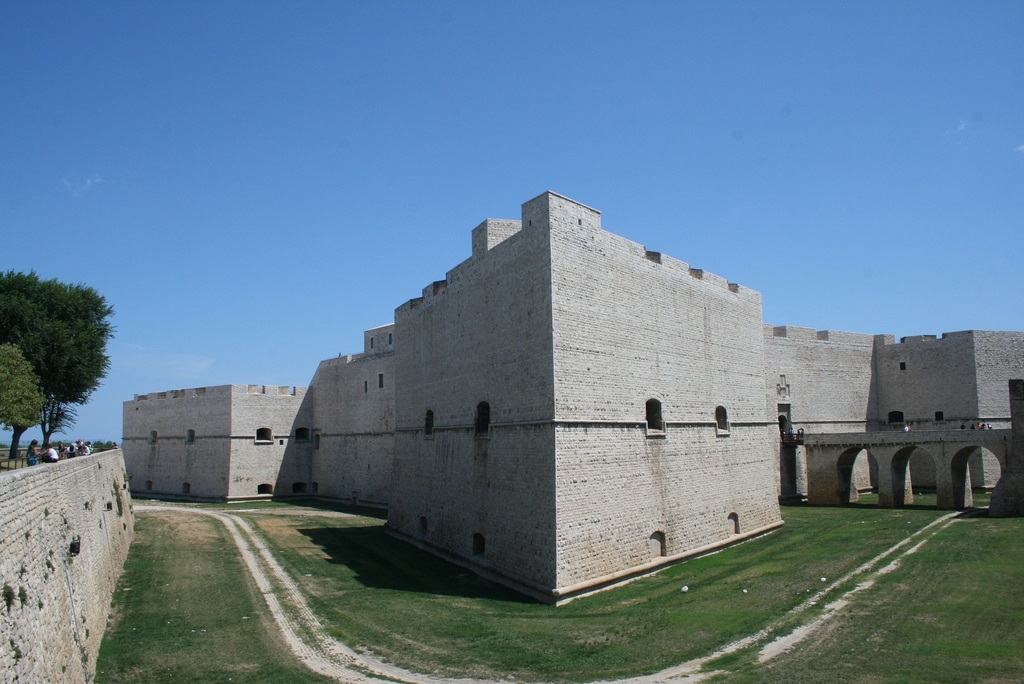
Voto:
Continente: Europa
País: Italia
Localización: Barletta
Año: s. XI
Estado: Terminado
Descripción:EL CASTILLO DE BARLETTA Y JARDINES “FRATELLI CERVI”
El edificio tiene una forma cuadrada con las esquinas, cuenta con bastiones en forma de torres de lanza. El edificio es el resultado de una superposición de edificios y demoliciones que continuaron durante los siglos establecidos por los distintos gobernantes. El núcleo original data del siglo XI, es Normanda, como lo demuestra la torre más alta constituida en la zona sur del edificio. Durante las Cruzadas se convirtió en refugio habitual para los cruzados salgan y lleguen de la Tierra Santa. Evidente es el legado de Federico II de Suabia, que se representa en el lado sur con ventanas ojivales que presentan el águila imperial esculpido en las lunetas, un motivo recurrente de la iconografía de Suabia. En 1228 el emperador lleva a cabo aquí en vista de comenzar la sexta cruzada.
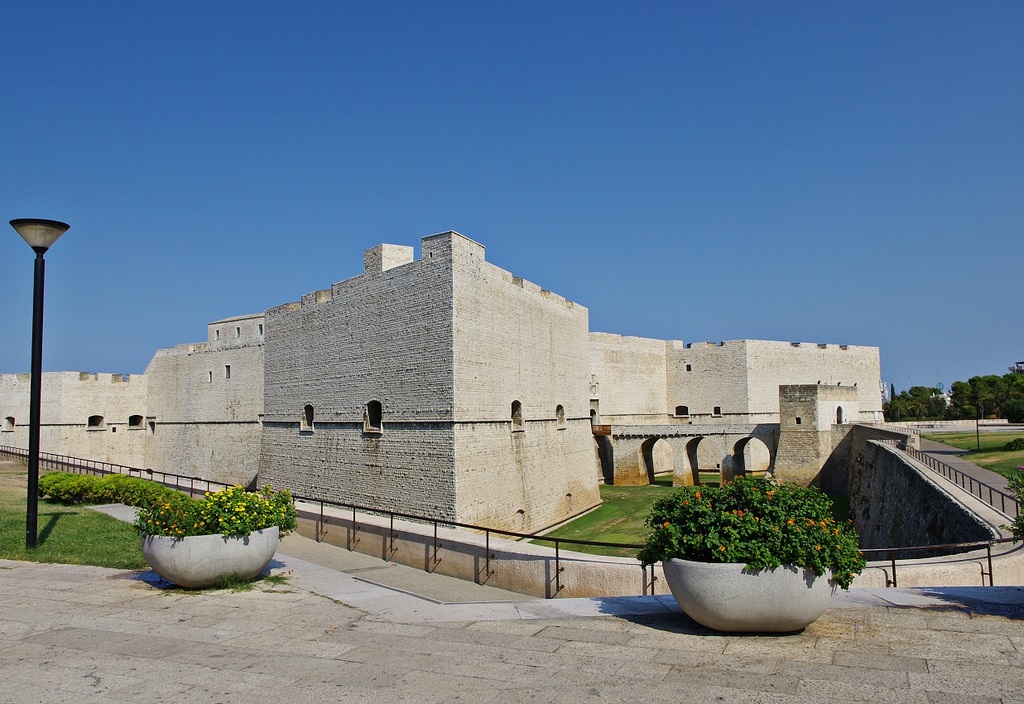
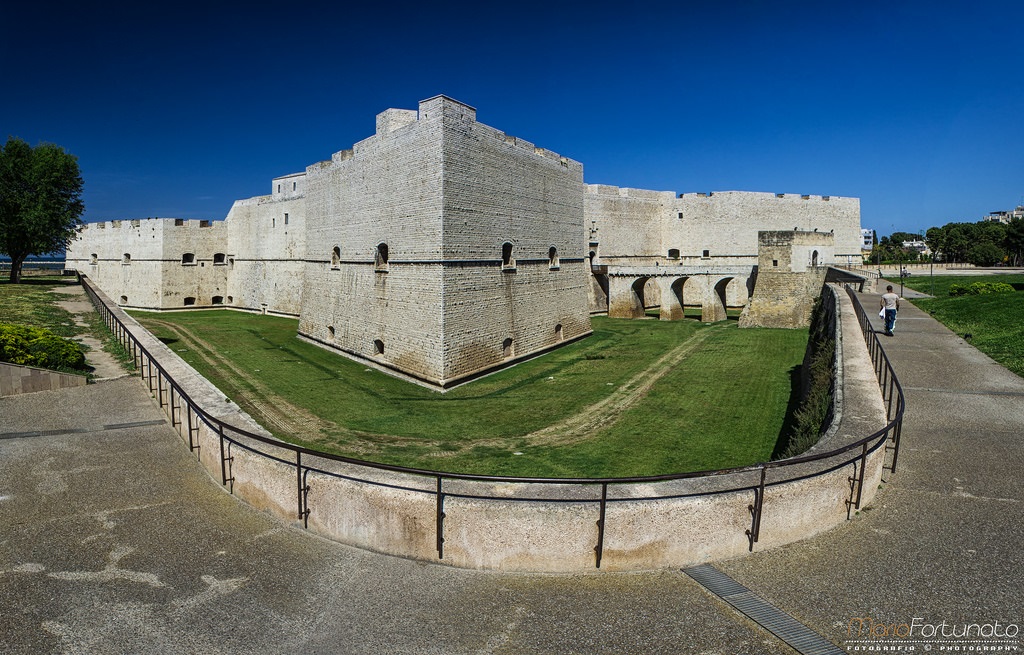
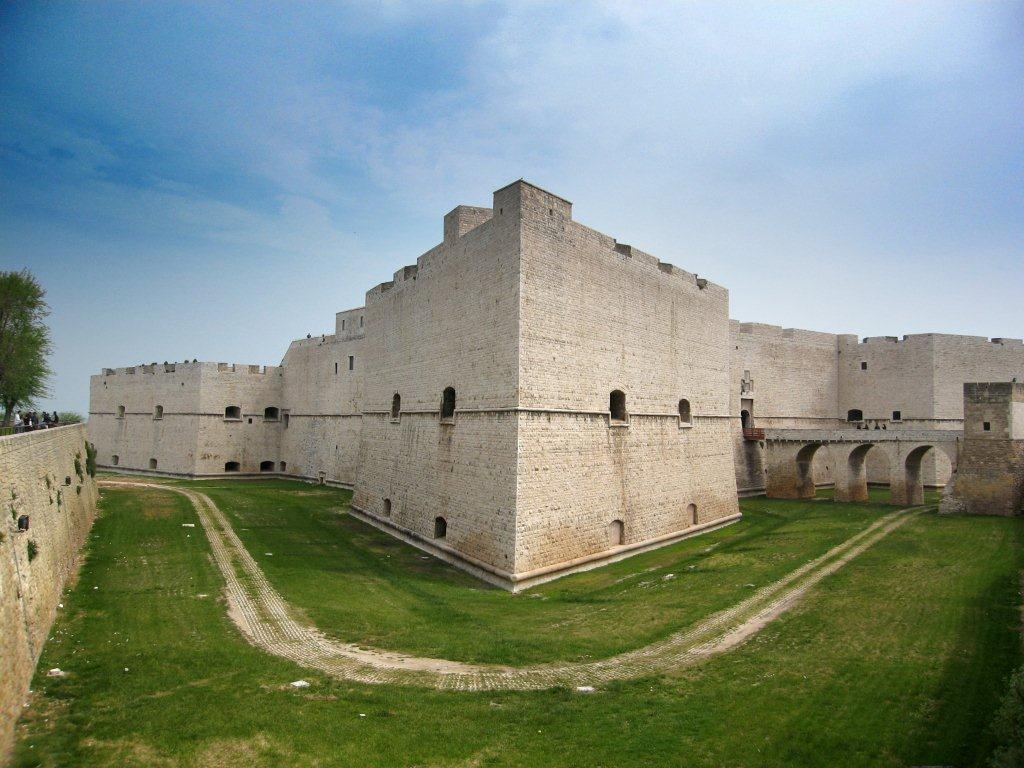
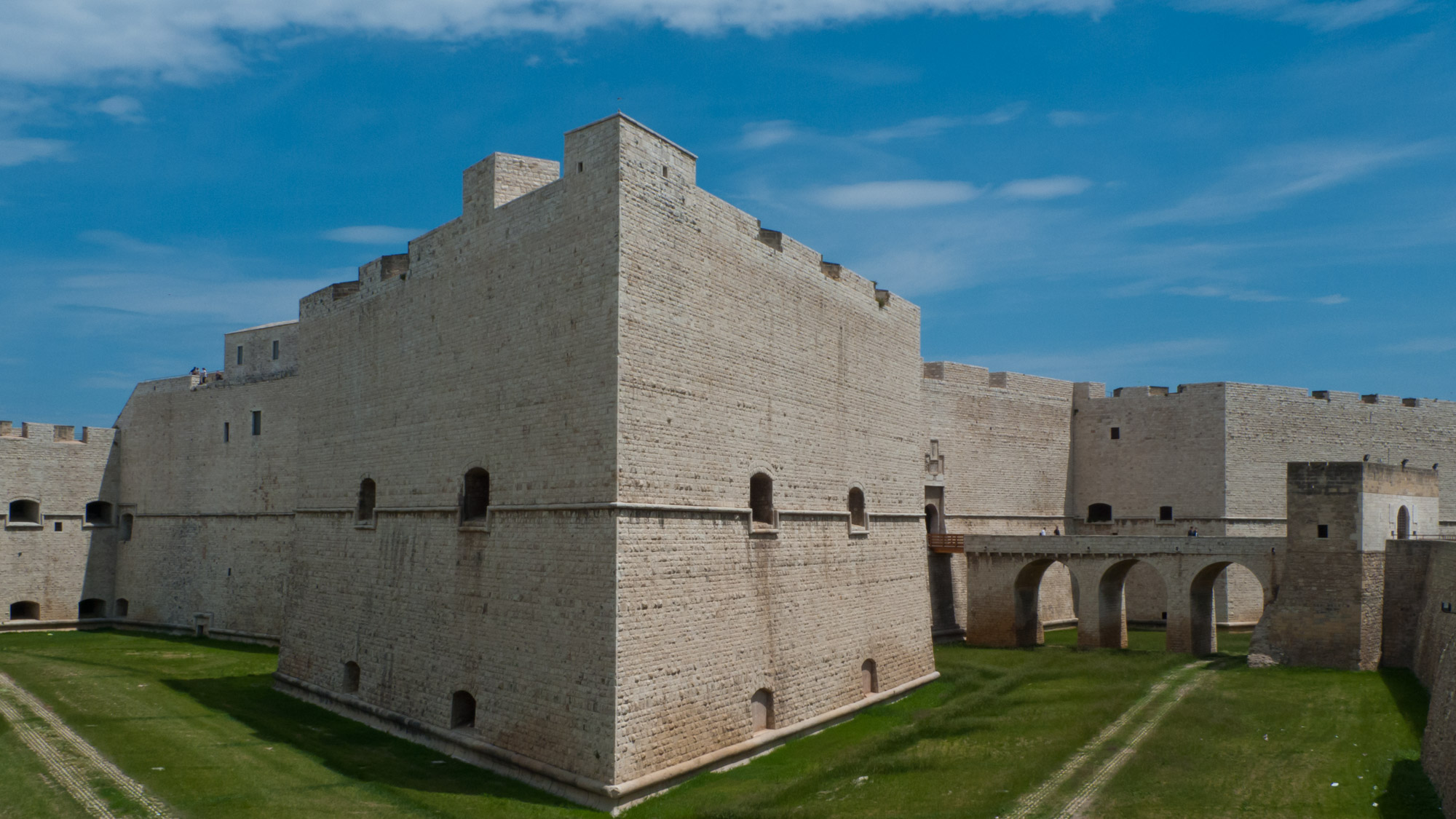
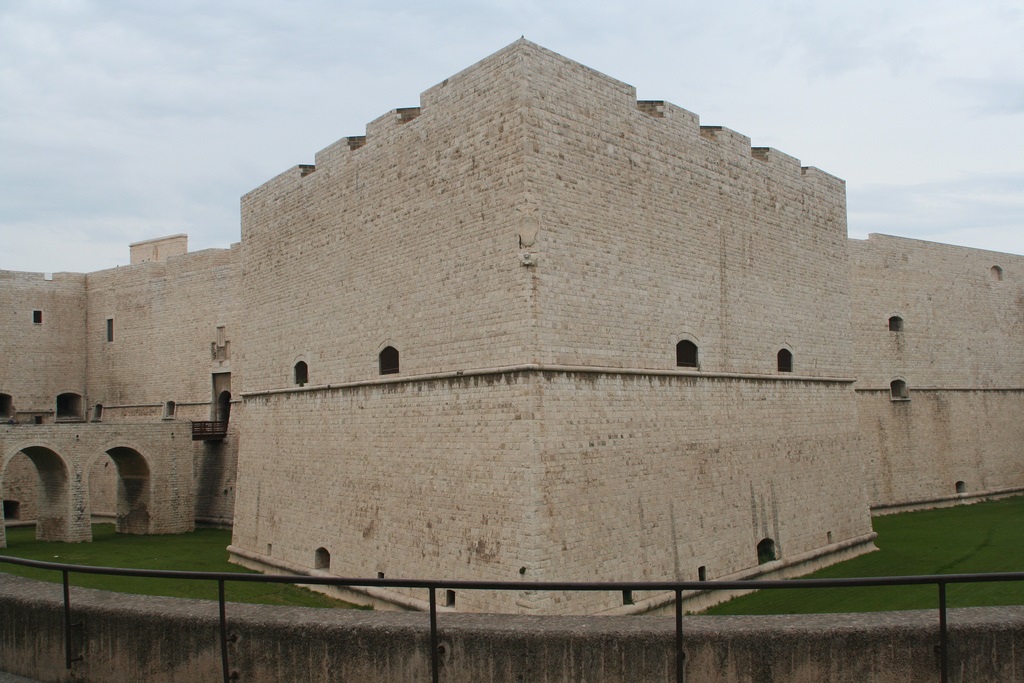
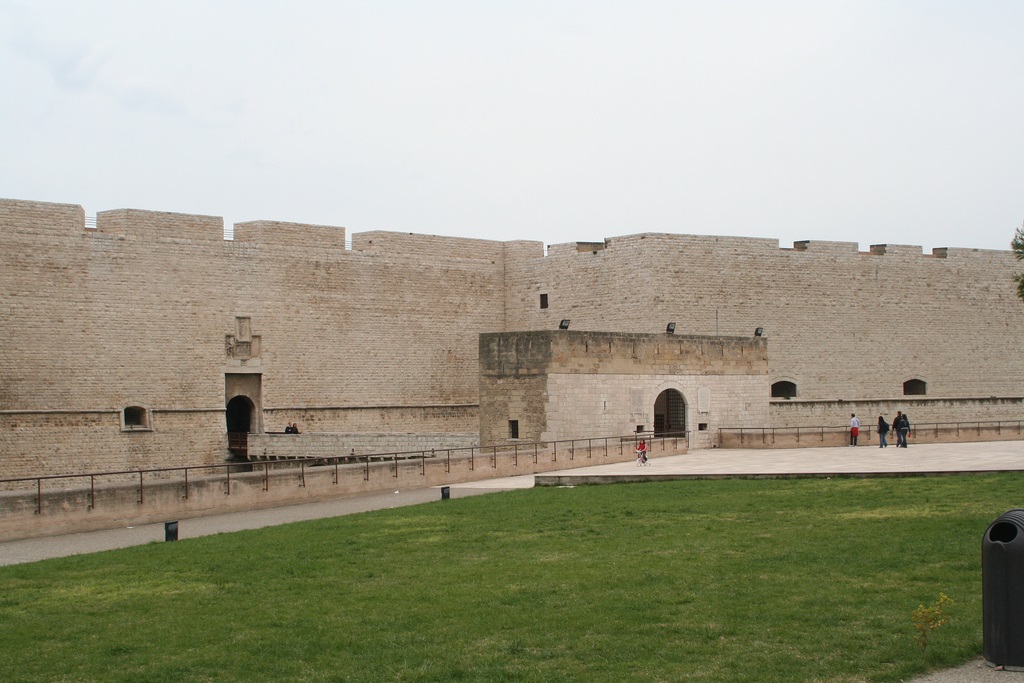
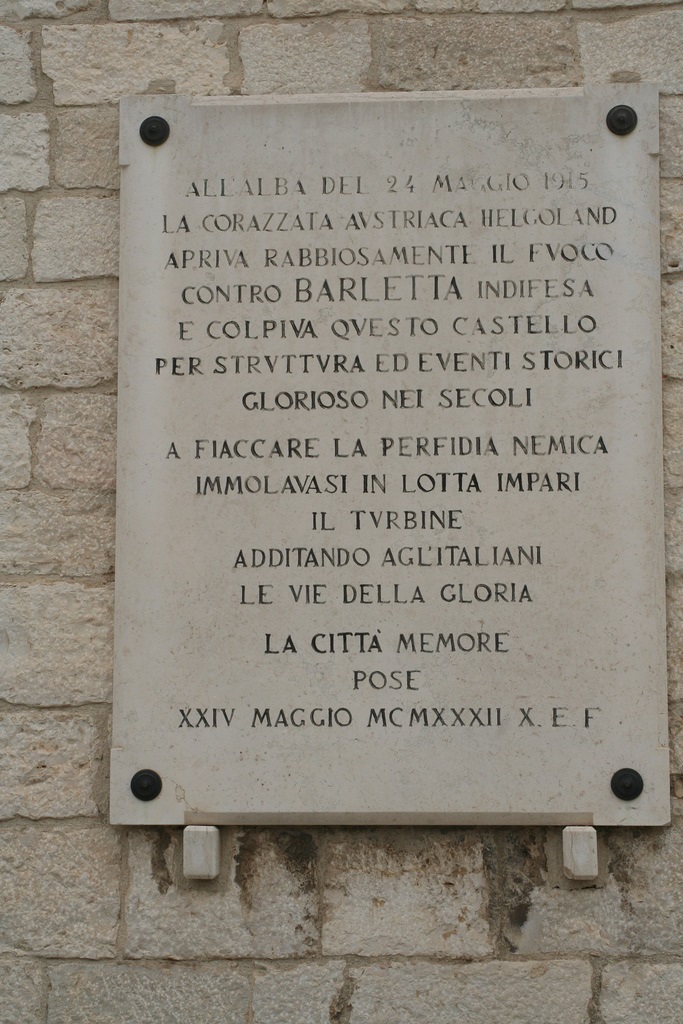
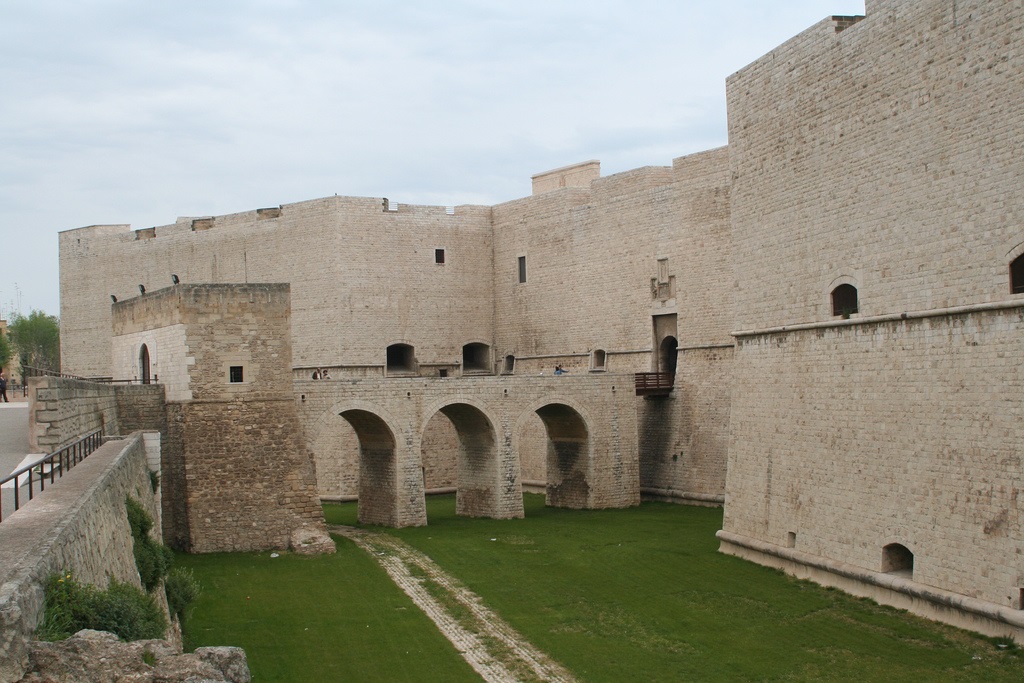
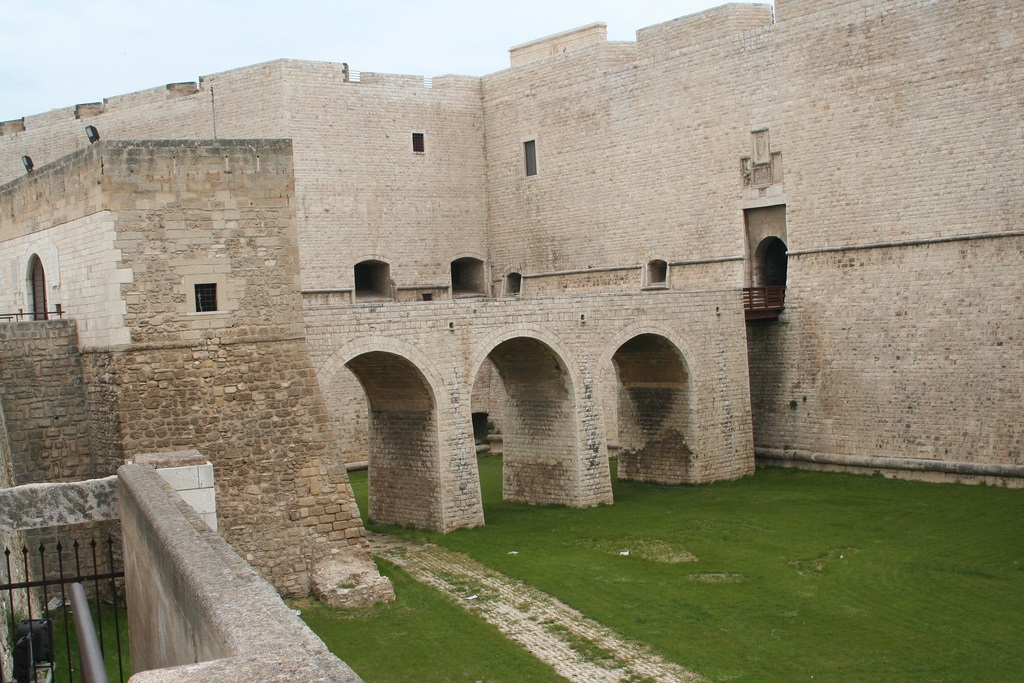
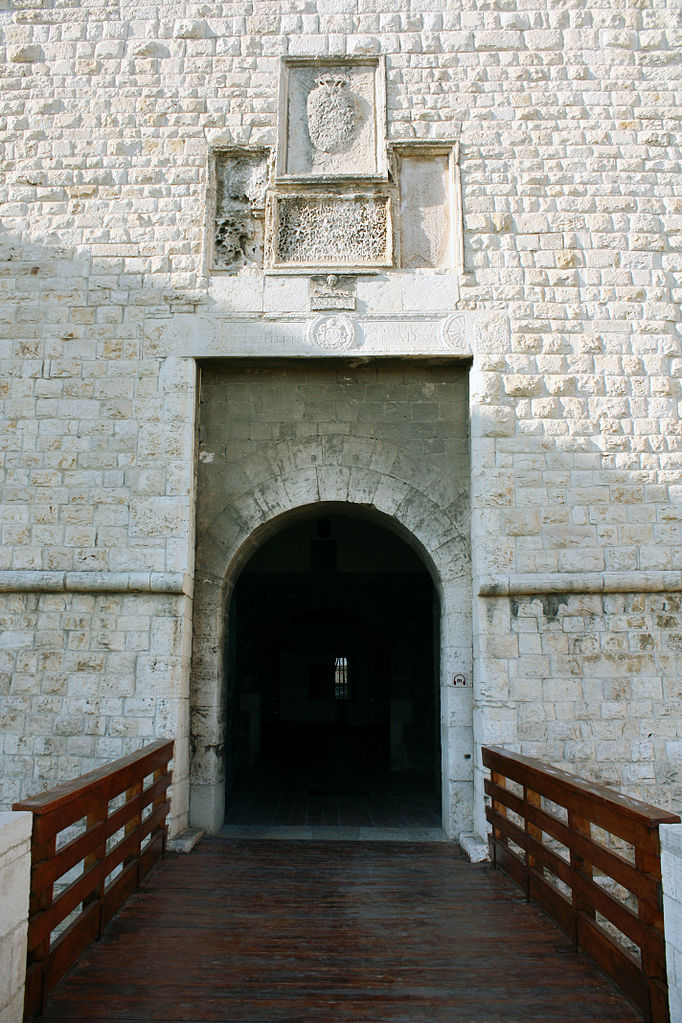
El castillo como vemos se terminó a partir de 1532, a instancias del rey español Carlos V. En 1867 fue comprado por la ciudad de Barletta, después se convirtió en un depósito de armas y una prisión. El 24 de mayo de 1914, el edificio fue atacado por el acorazado austríaco Helgoland, que fue rechazado por el destructor Turbine para evitar más daños al castillo. Durante la Segunda Guerra Mundial, fue ocupado el interior por una guarnición militar que en septiembre de 1943 se opuso ferozmente al ejército alemán que tenía la intención de ocupar la ciudad.
En 1973 se decidió restaurar el castillo, que estaba en un estado considerable de deterioro, con una larga restauración, volviendo a su antigua gloria en 1988. Durante el trabajo de 2001 se ha realizado la reurbanización, que terminó el 7 de diciembre de 2002, los Jardines del Castillo, entre los corazones palpitantes de la vida urbana y la vinculación efectiva entre la costa este y el centro histórico. Actualmente alberga la biblioteca municipal, el museo municipal y galería de arte y lapidario. Entre las piezas más importantes conservados aquí es el Sarcófago de los Apóstoles, el primer testimonio cristiano en Barletta, [84] y un busto de Frederick II del siglo XIII.
Giardini 'Fratelli Cervi' Los jardines del Castillo
Con derecho a Fratelli Cervi, se extienden alrededor del castillo y el marco de la fortaleza y de la catedral de Santa Maria Maggiore. Después de la restauración, que finalizó en 2002 y han visto la remodelación de los jardines, transformados en un parque con áreas de picnic, el área entera fue devuelto a la ciudadanía Barlettana, que se ha convertido en un punto focal del centro histórico.
http://www.nostraitalia.it/es/il-castello-di-barletta-e-i-giardini-fratelli-cervi/
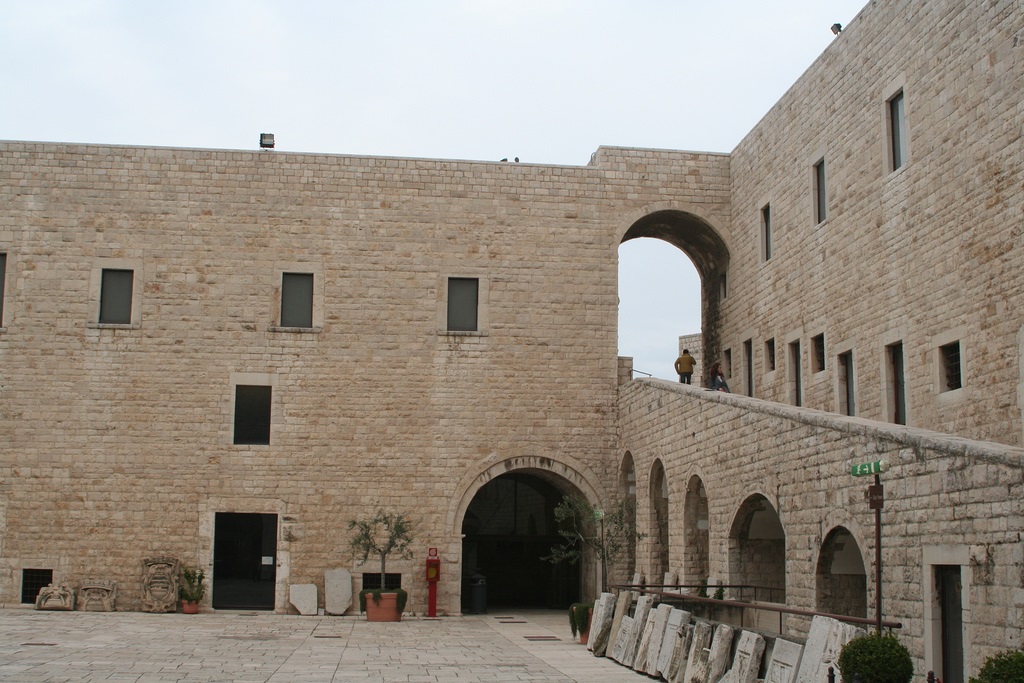
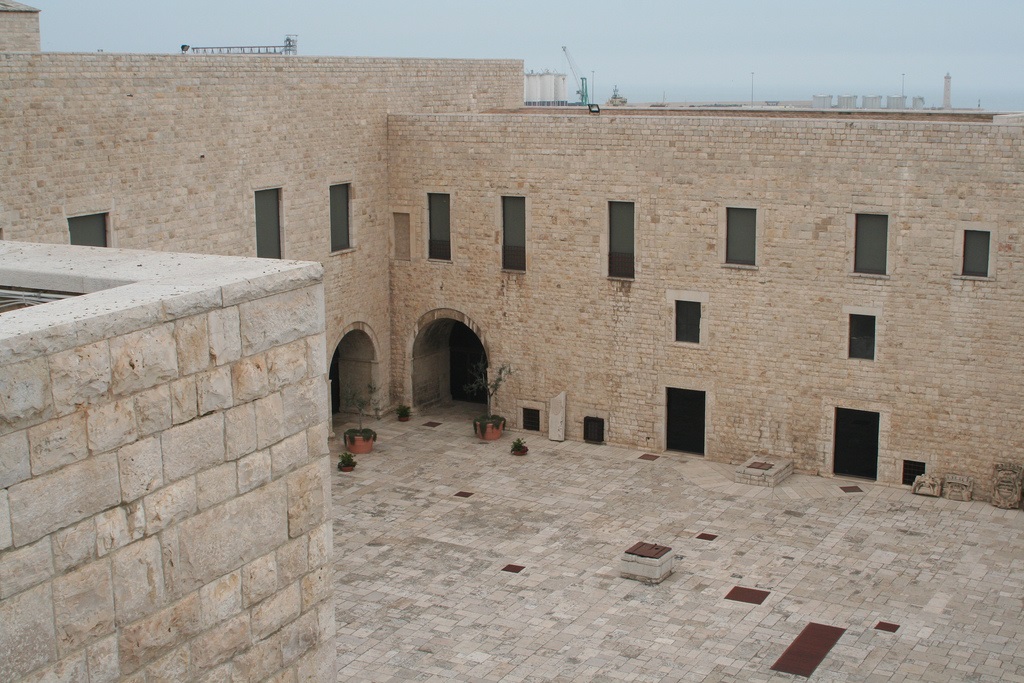

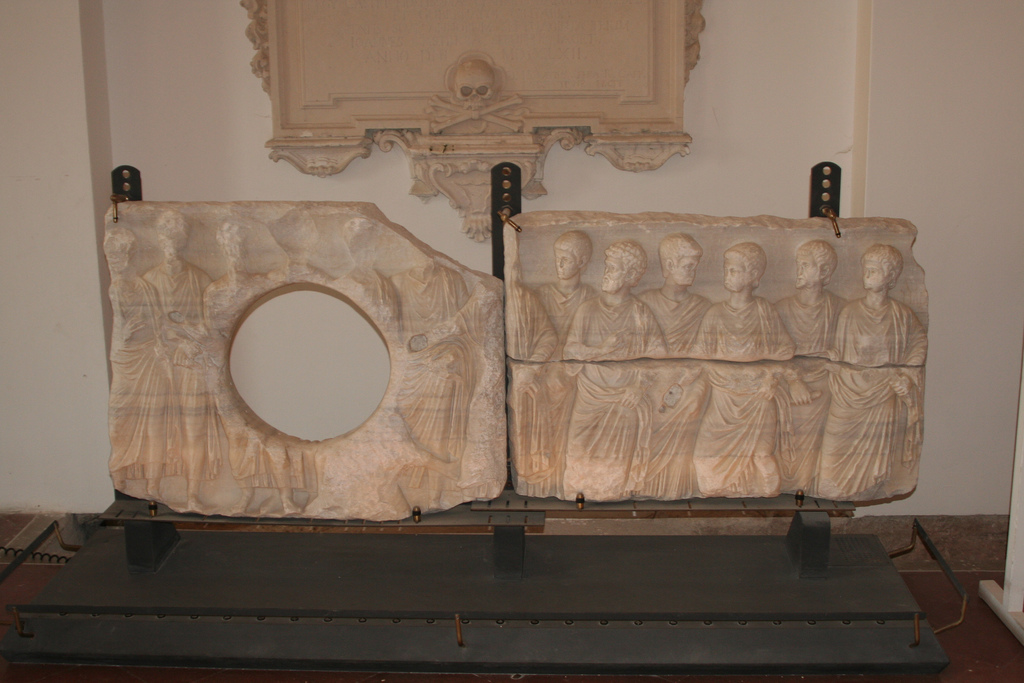
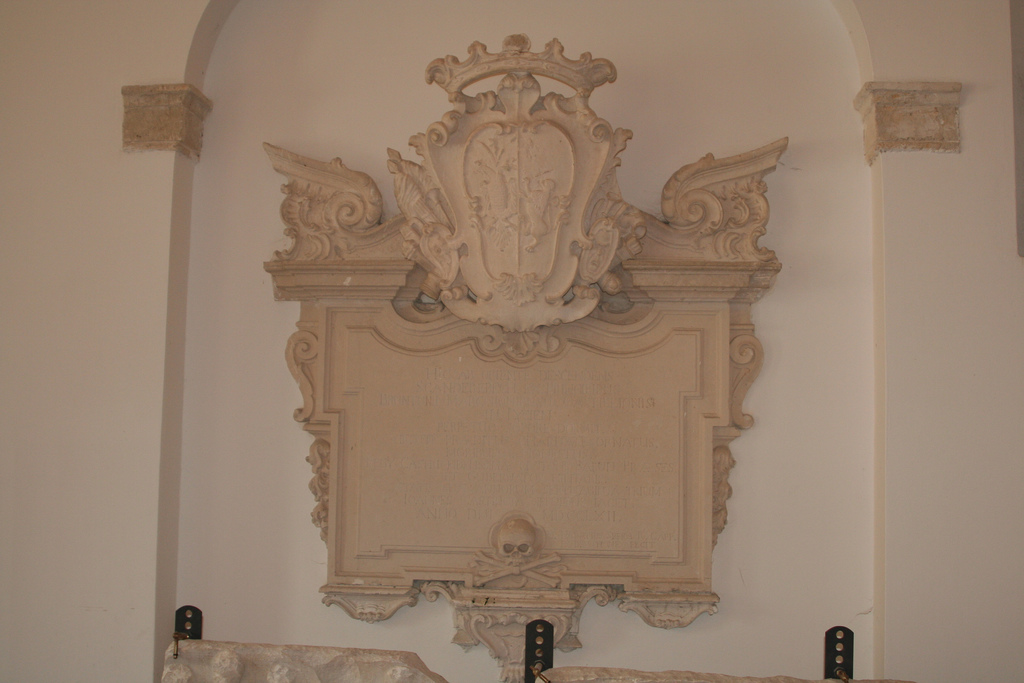
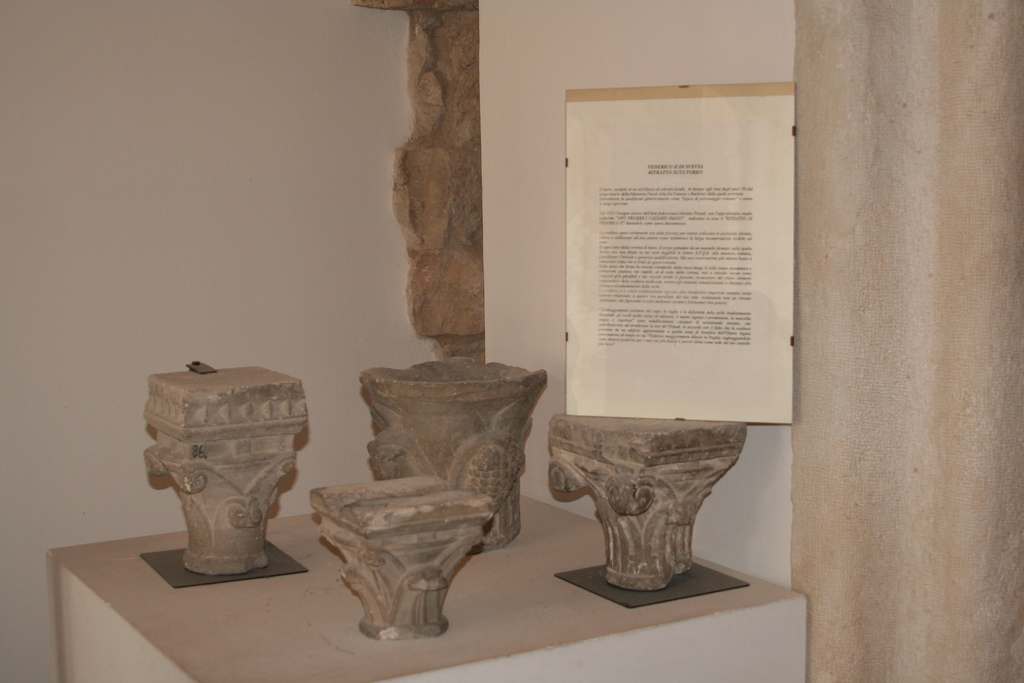
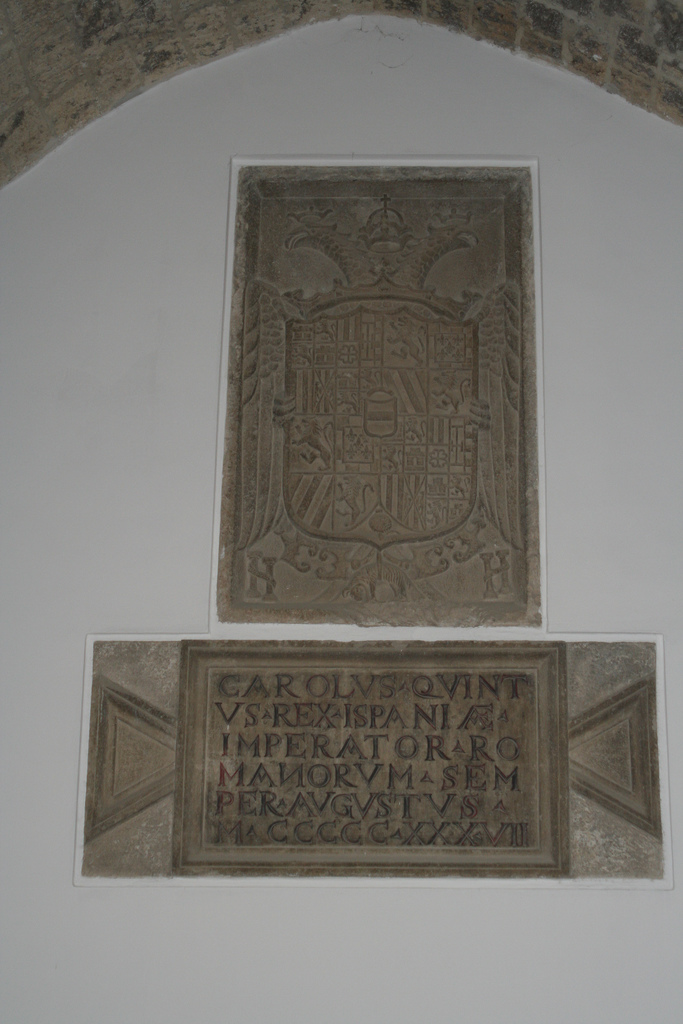

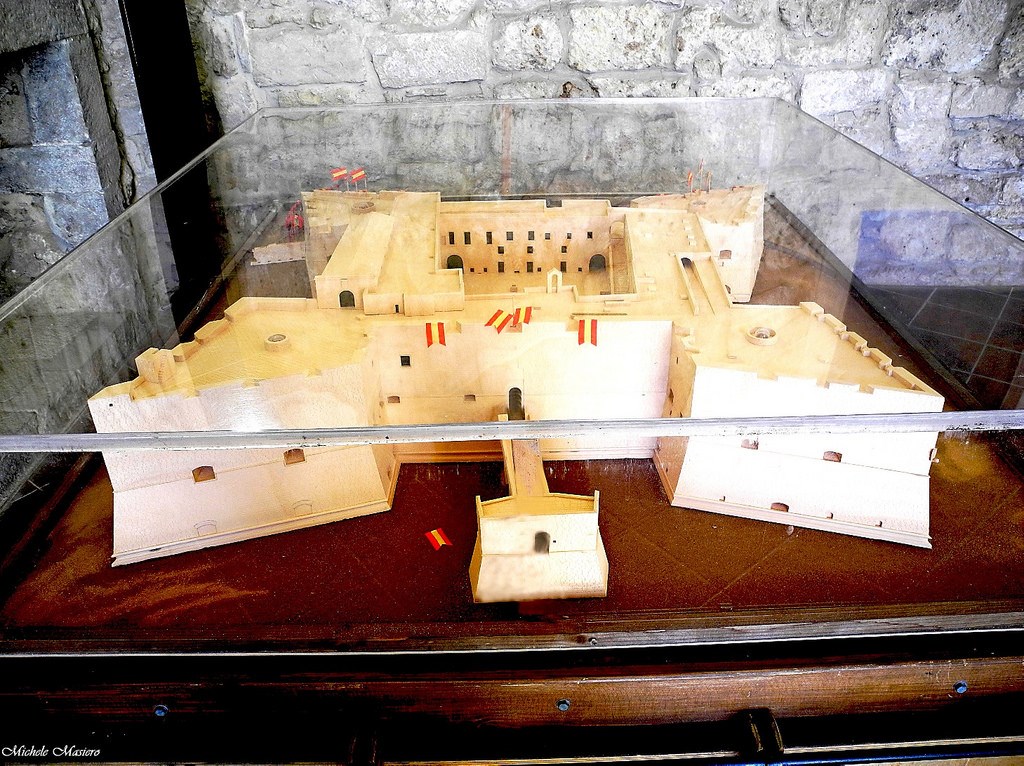
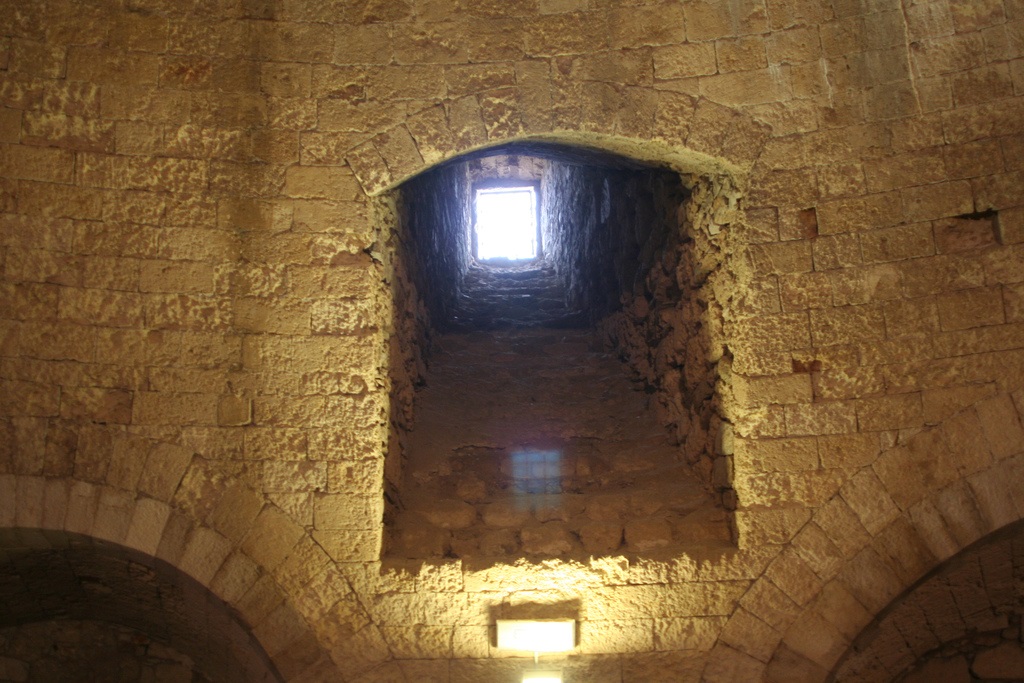
The Castle
The unprotected lands of Barletta The original nucleus that gave birth to the current castle of Barletta was built by the Normans between 1046 and 1050; the Normans were accustomed to fortifying the conquered lands providing them with towers, in view of the occupation of the neighboring territory. For this reason, Count Peter, not being able to go directly to the town of Trani, because strongly held in Greek domain, took possession of the unprotected lands of Barletta, and built the first fortress for defensive purposes, in the southeast of the castle. The settlement built by Peter the Norman consisted in the fortress (the main tower) southeast.
The towers After the destruction of Bari and then the appointment of Barletta as territorial capital, Guglielmo il Malo, between 1156 and 1162, extends the building erecting two more towers, connected by a simple wall, to which will subsequently be added a fourth, on the south-west side, creating a pseudo-trapezoidal plan. The Norman period ends in 1194 with the death of Tancredi. The stupor mundi is born In the same year Frederick, son of Henry IV and Constance of Hauteville, was born, who at only four received the coronation. After the death of his parents, Frederick went under the protection of Pope Innocent III. In 1202 the fortress of Barletta was given in custody by Count Gualtiero to the cousin of Pope Innocent III, Marshal Jacopo dei Conti di Segni. The youth of Frederick II and the castle During the following year, however, the Barlettani came to besiege it and drove away the pro-papal castellan, who occupied it on behalf of Jacopo, damaging part of the wall building. The growth of Federico runs parallel to that of the castle of Barletta, which became the frequent place of residence of the future emperor. Upon the arrival of Frederick II in Barletta the castle showed itself as an irregular and asymmetrical structure, far from the usual construction of the castles built by Frederick. Between 1224 and 1228 Frederick II intervened by reducing the eastern area and building his Frederician domus, emphasizing the decorative and architectural aspects of the castle and turning what was previously a fortress for defensive purposes into a palace for his court. In 1250 with the death of Frederick II, Charles of Anjou took over the possession of the castle. This completes the Swabian dynasty in favor of the Angevin. The Angevin dynasty destroys the work of Frederick II and closes in the Templars The importance of Barletta and its castle and the hatred that Charles of Anjou had for the Swabians led him to intervene on the whole fortress. From 1308 to 1312 in the dungeons of the Castle of Barletta were detained the Templars, residing in the city and captured through the will of Robert of Anjou, who succeeded to Charles II of Anjou and Charles I of Anjou. The ordinary of the Aragonese period Nothing extraordinary happened to the castle during the Aragonese period, apart from a summons by Gennaro Bacile of Castiglione, not supported by any documental certification, according to which generic fortifications were built in the fortress in the years 1458, 1465 and 1481.
The Spaniards arrive… With the arrival of the Spaniards who occupied the kingdom of Aragon in 1504 (Peace of Lyon) first began the fortification works on the walls, the construction of ramparts like the Paraticchio and great towers like that of S. Lucia, then the construction of the V city wall that was extended to the neighborhood of S. Giacomo. The Emperor Charles V would get the castle of Barletta in 1529, with the peace of Cambrais, but he will start works on the fortress to adapt it to the new architectural canons of the time from 1532, works that went on for about 66 years. …and with them deep changes Under the Spaniards the castle underwent a profound transformation accomplished by use of construction techniques of fortifications of that period, which had to be prepared to respond to the attack no longer with usual weapons like the sword or spear but with the use of cannons. The sixteenth century’s logic of construction works wanted powerful and robust constructions in view of potential attacks, surrounded by large flat areas for better enemy control from the land. So the castle of Barletta assumed the current morphology: a quadrangular structure, with four pentagonal bastions on the corners, an equipment of cannons ready for defence and a moat that allowed the separation from the land on three sides, while on the northern side the look on the sea ensured an immovable defense. The abandonment The state of abandon of the work, however, was made clear in 1734, when Giulio Borromeo Visconti, Austrian viceroy, on the eve of the Battle of Bitonto took refuge in the castle of Barletta, however unusable due to the carelessless of the Austrian government, which for 27 years had never intervened maintaining or restoring it.
The rebirth In 1806 the fortress became the seat of a French military division and seven years later the French general Joachim Murat, after having visited it, ordered to proceed with the consolidation of the defensive structures. In 1876, after having been considered unnecessary to the national defense, the castle was auctioned and awarded to the city of Barletta for 30,100 Liras. The last battle The last military event which involved the Castle of Barletta happened early in the morning of 24th May 1915, when during the initial phase of World War I, the Austrian army with six cannon shots hit the front of the curtain and the northern bastion, facing the sea. The castle managed not to suffer further shocks thanks to the intervention of the destroyer Turbine. In 2002, after two years of restoration, which saw the requalification of the Gardens of the Castle, transformed into a park with picnic areas, the entire area was returned to the Barlettani, who made it a focal point of the historic city centre. Of great interest is the bust of Frederick II, which is kept in the Civic Museum. The sculpture is ascribed to a beyond-Alps artist for its Gothic spirit imprinted in the portrait, despite the roman cloak worn by the emperor. Sources: barlettacity.it dif.tno.it wikipedia
2013 - Federico Itinerari dello Stupore
http://www.federicoitineraridellostupore.it/index.php/en/puglia/barletta/the-castle
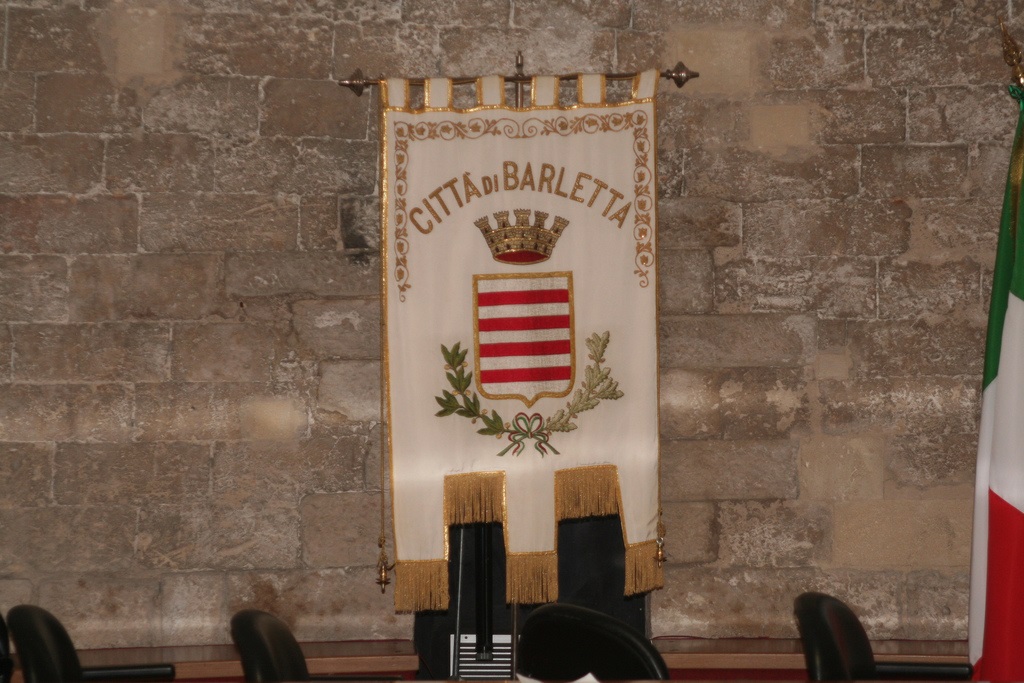
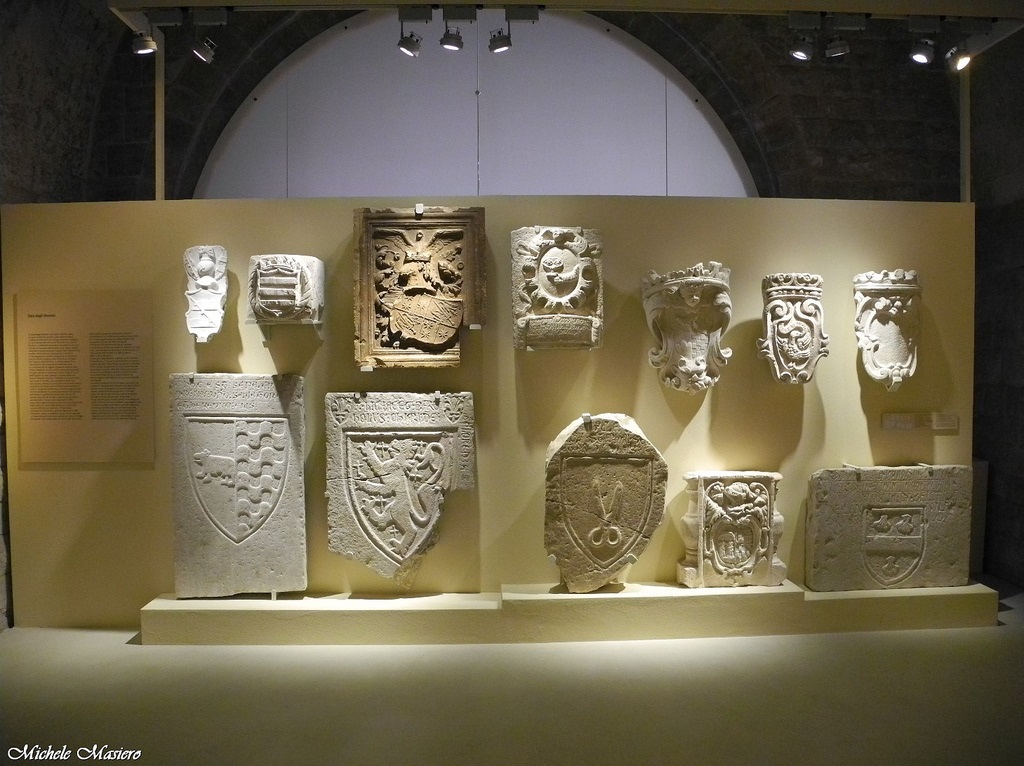
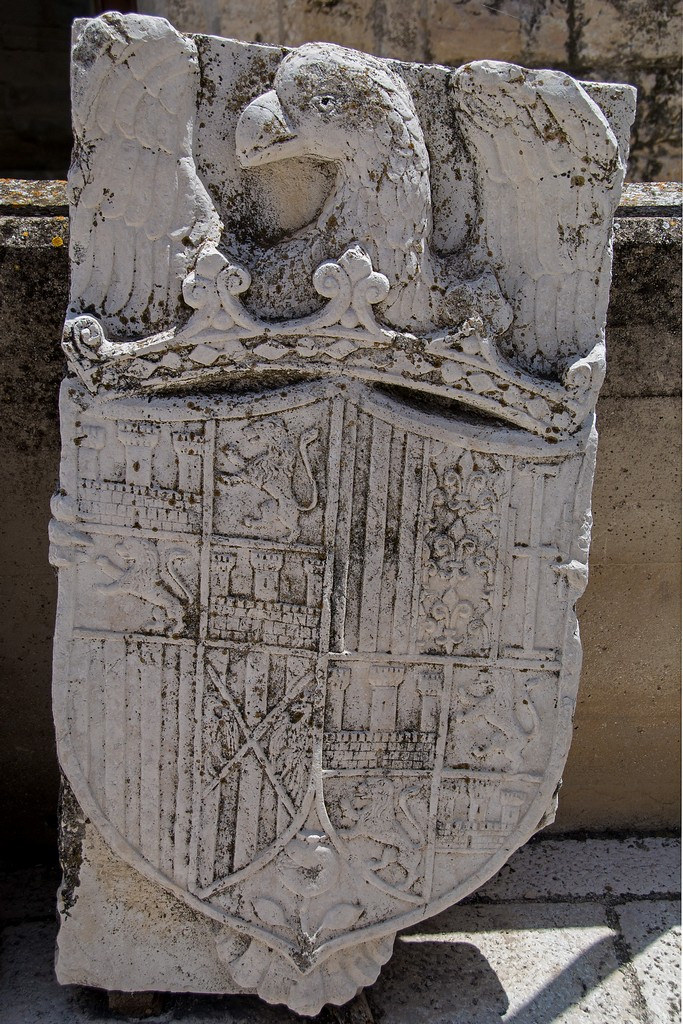
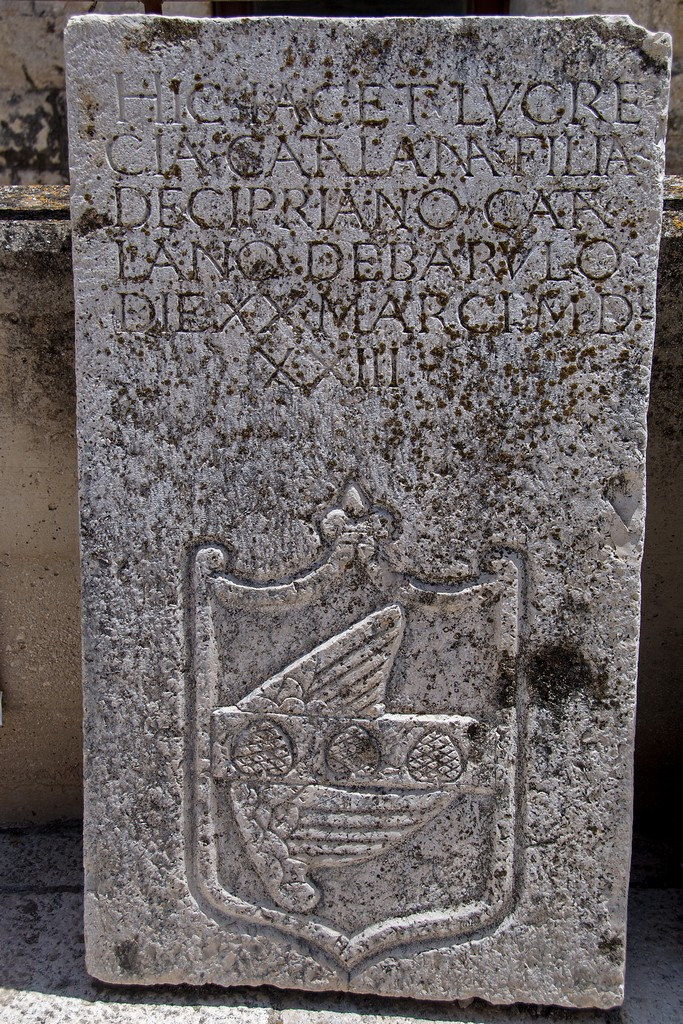
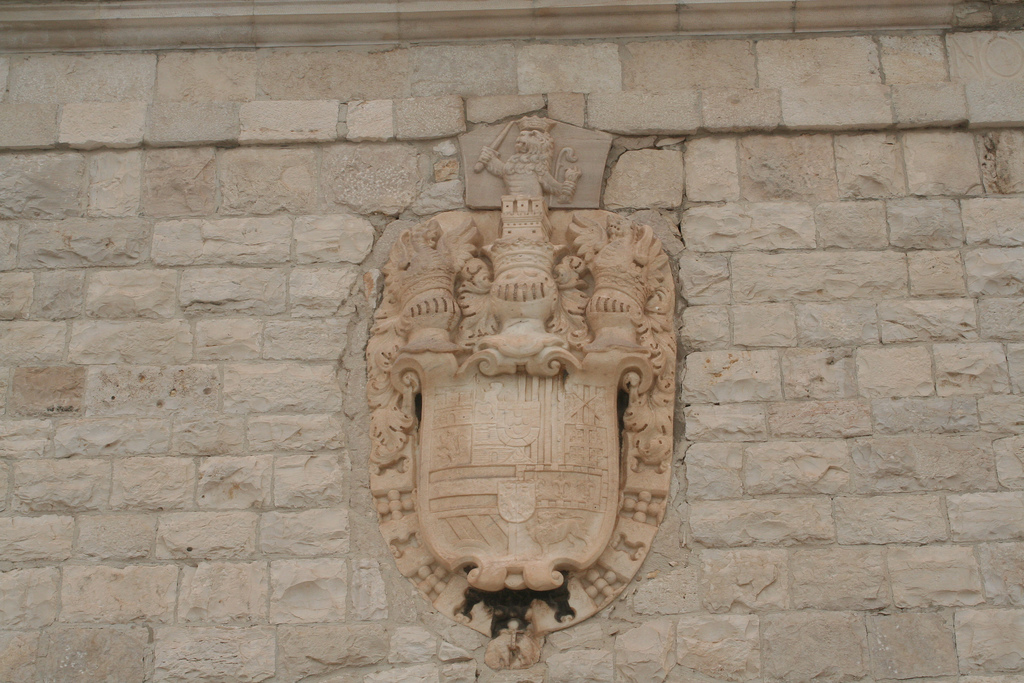
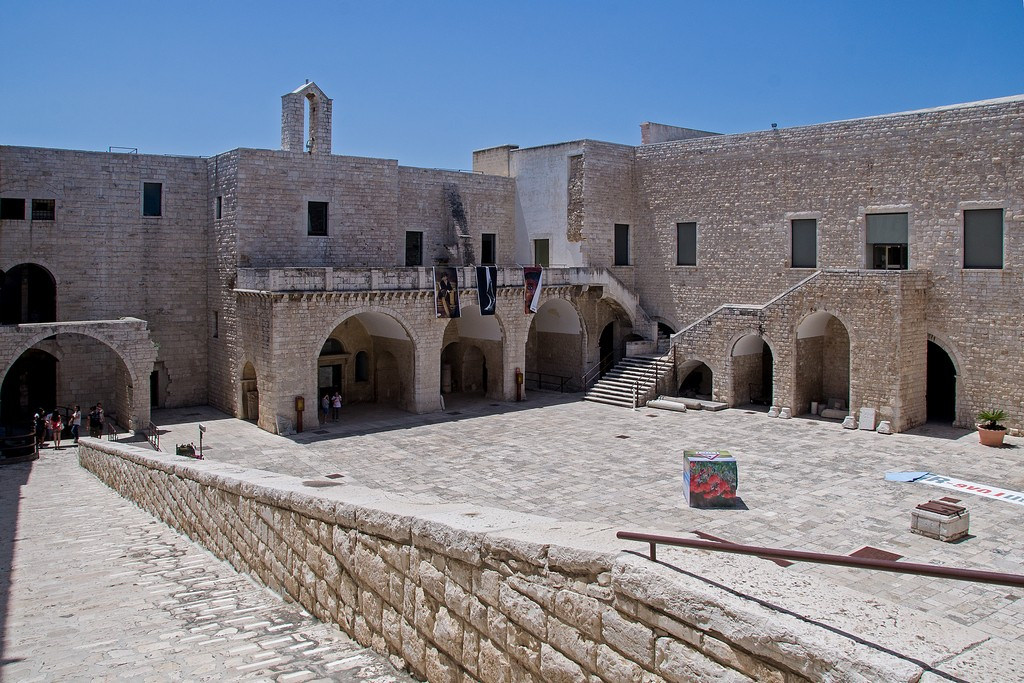
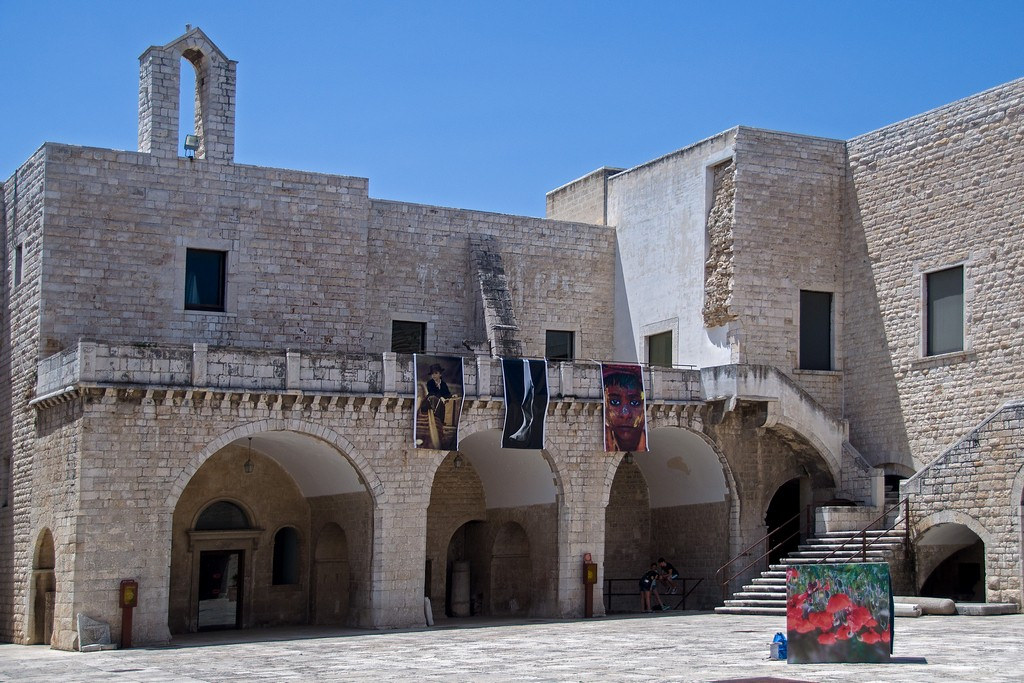
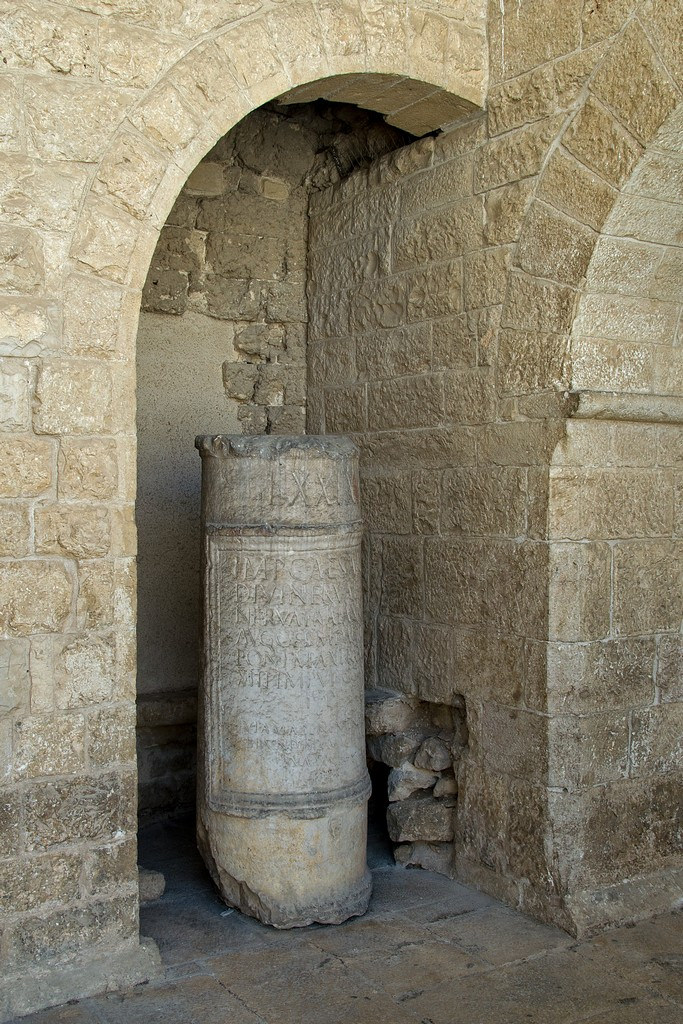
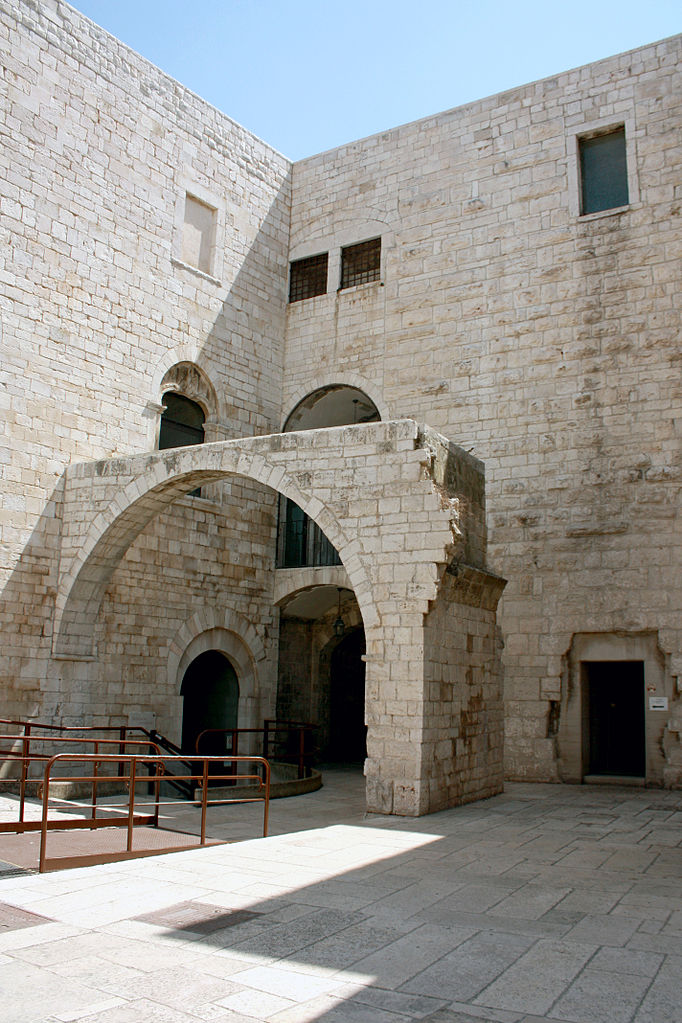
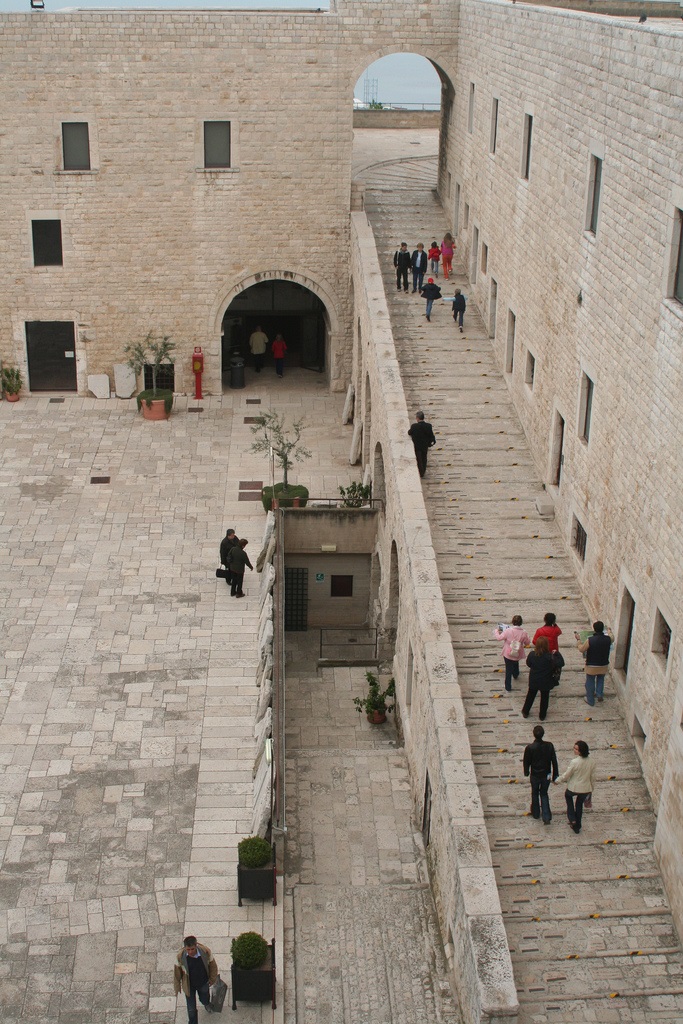
Il castello di Barletta, situato nell'omonima città pugliese, è il risultato architettonico di una serie di stratificazioni dovute al susseguirsi di diverse dinastie al potere, succedutesi dall'XI secolo al XVIII secolo. Un tempo fortezza a scopo difensivo, cinta dal mare che occupava il fossato tutt'intorno al castello e lo isolava da potenziali attacchi nemici, costituisce un punto strategico nella vita cittadina nonché un importante cardine urbanistico.[1][2][3] È sede della Biblioteca comunale,[4] del Museo civico e di una sala convegni e mostre.[5]
Tra le opere conservate, oltre un presunto busto di Federico II di Svevia[6] in pietra calcarea, risalente al XIII secolo,[7] è qui posto il Sarcofago degli Apostoli,[8] altorilievo in pietra prima testimonianza del Cristianesimo a Barletta, risalente al periodo compreso tra il III e il IV secolo.[9]
http://it.wikipedia.org/wiki/Castello_di_Barletta
http://es.wikipedia.org/wiki/Barletta
https://www.flickr.com/photos/giovy/sets/72057594143250962
https://www.flickr.com/photos/78527496@N07/sets/72157639679742706
https://www.flickr.com/search/?w=67177618@N08&q=Barletta Castello
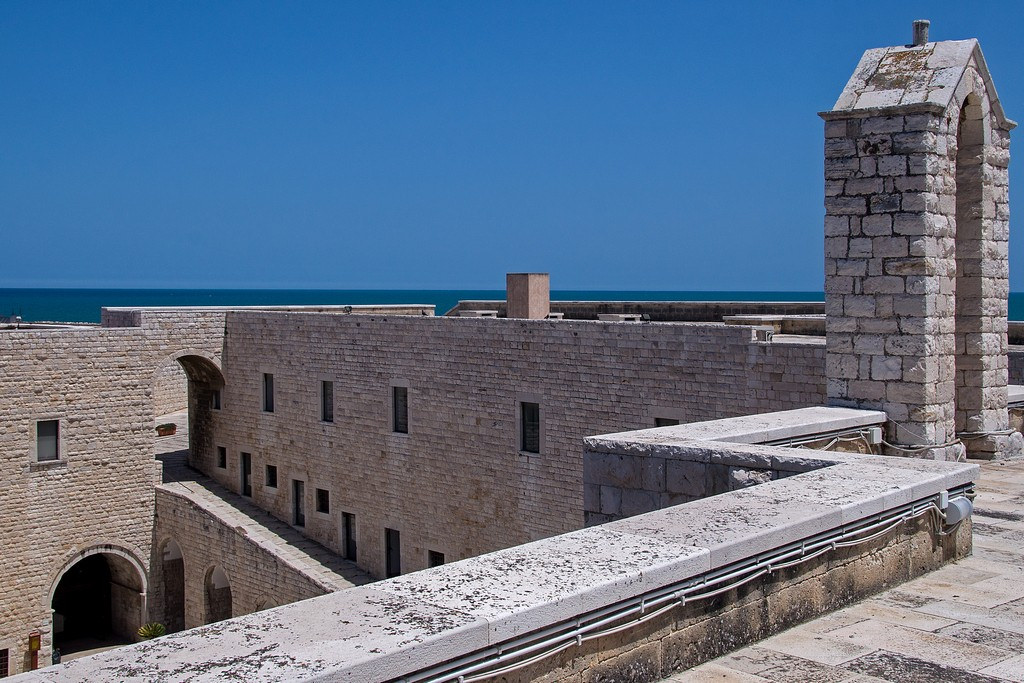
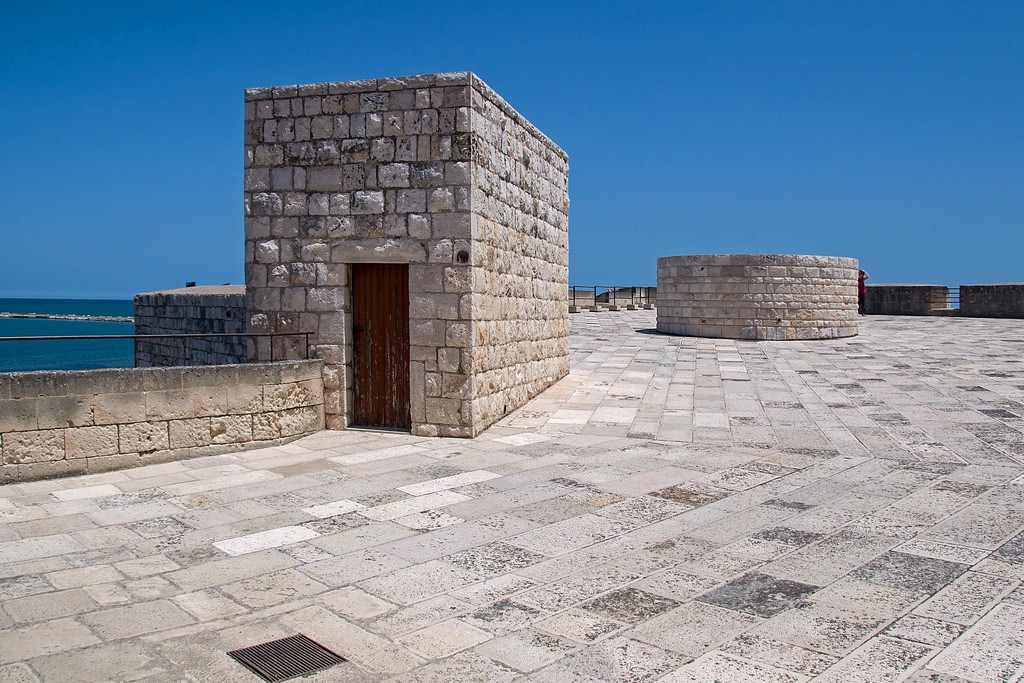
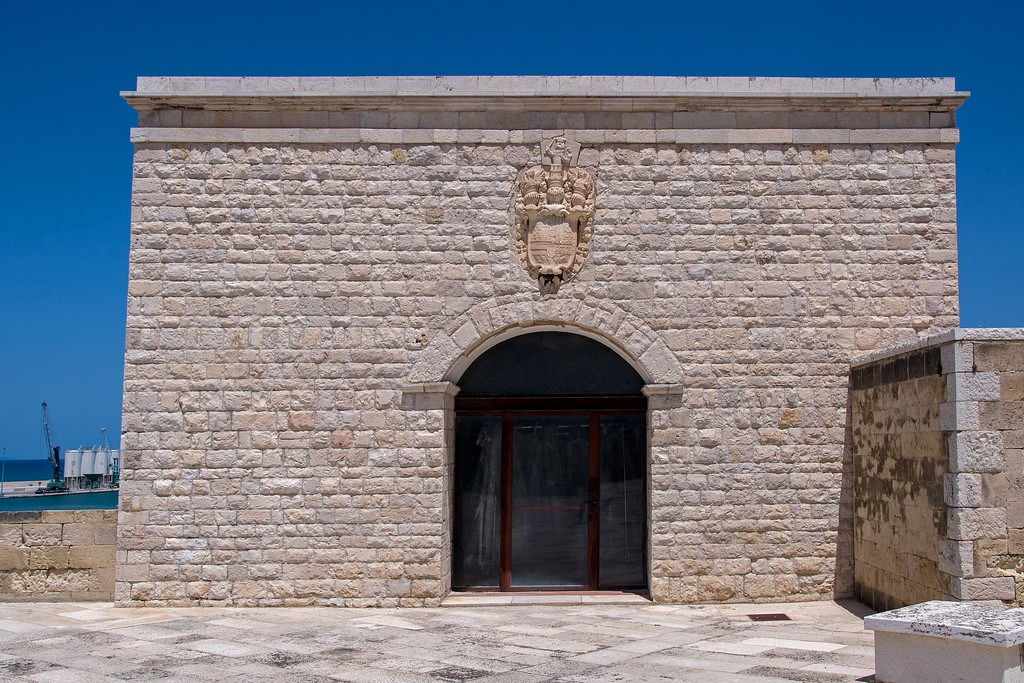
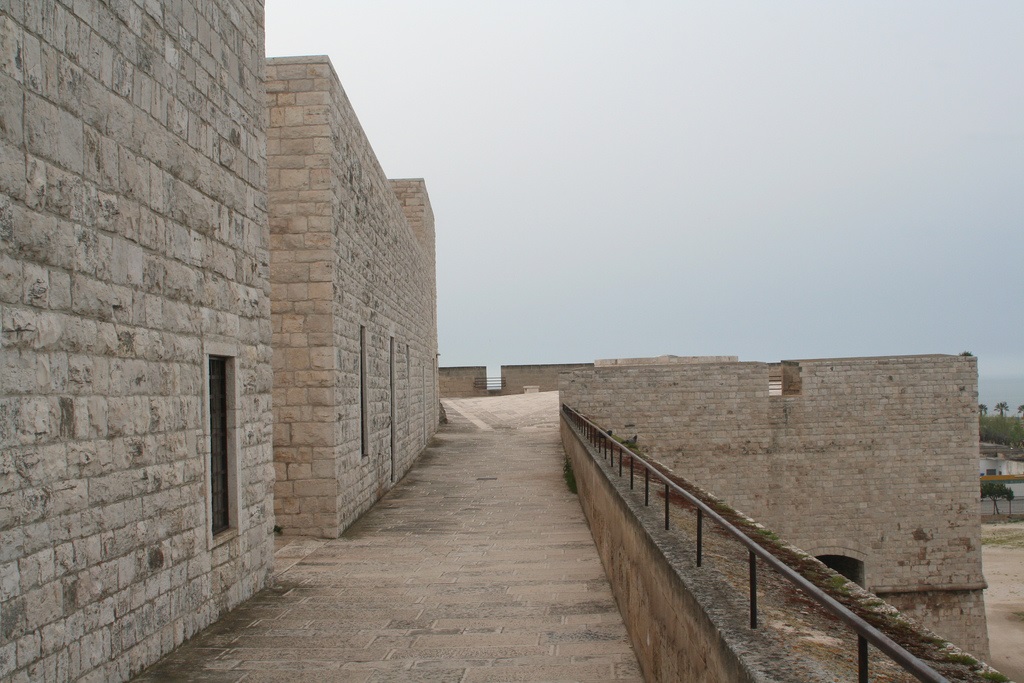


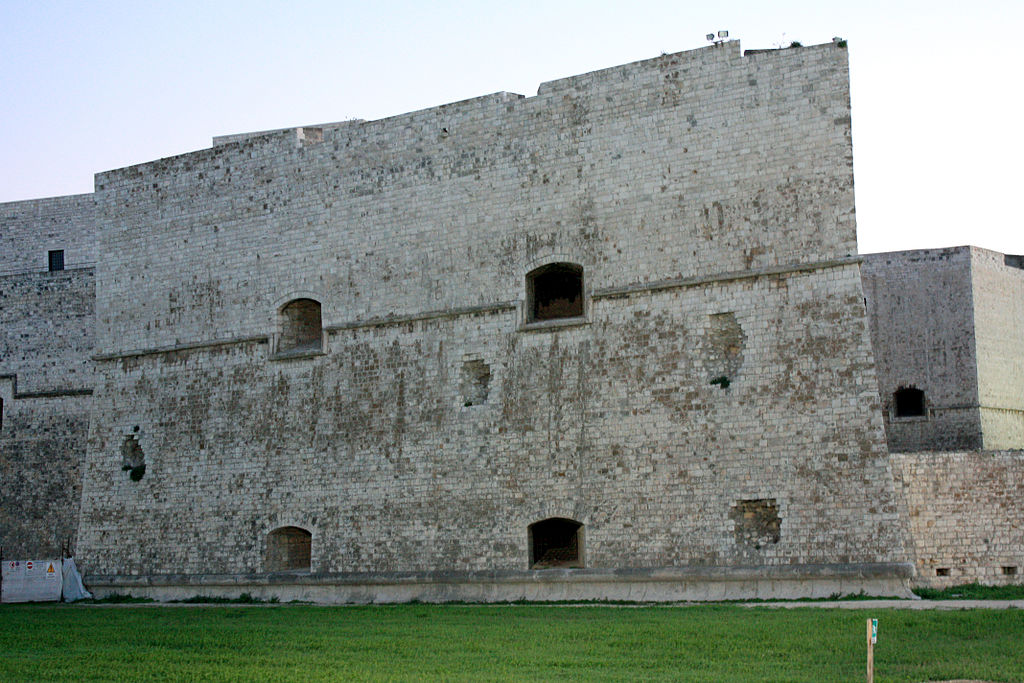
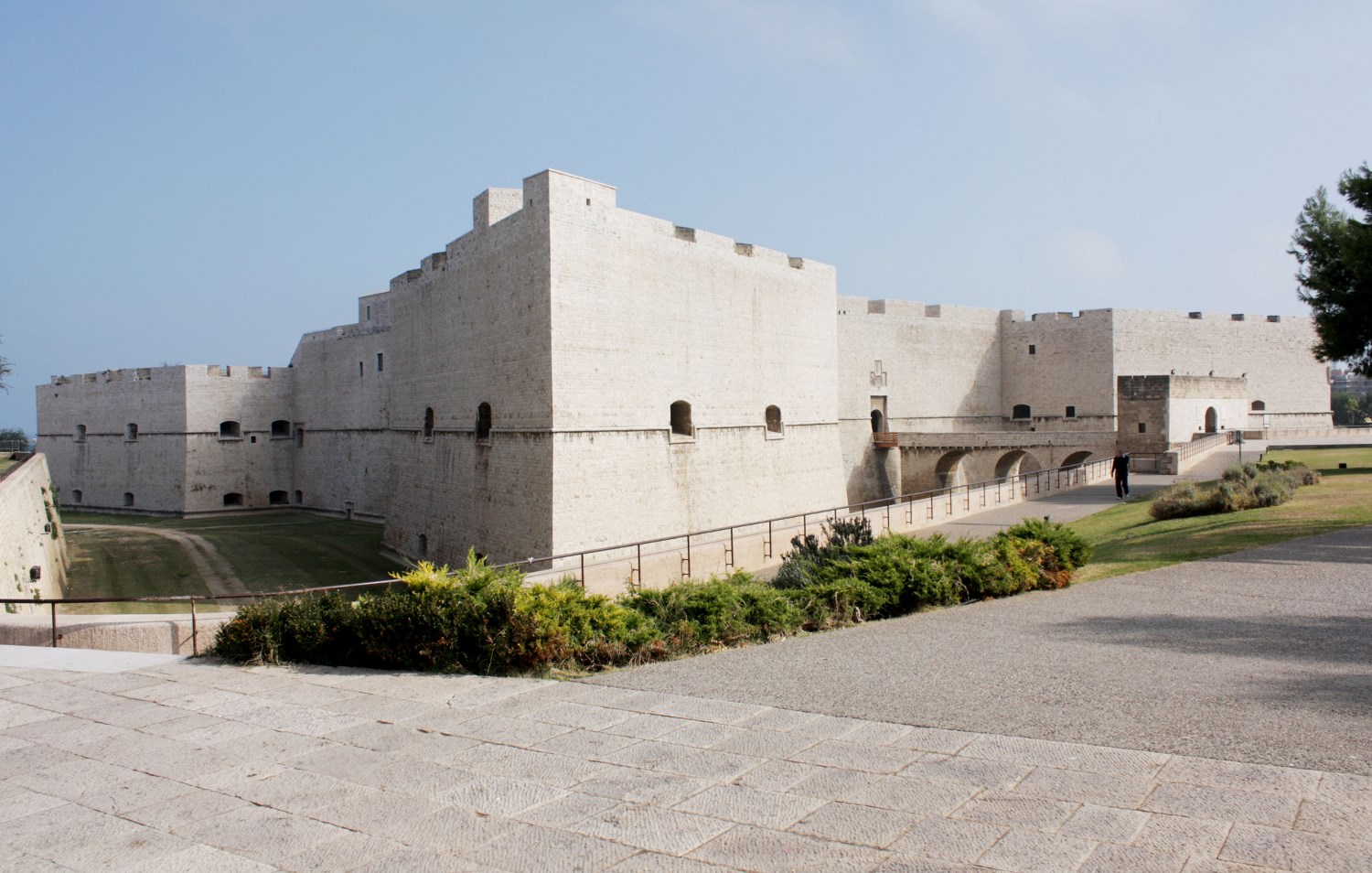
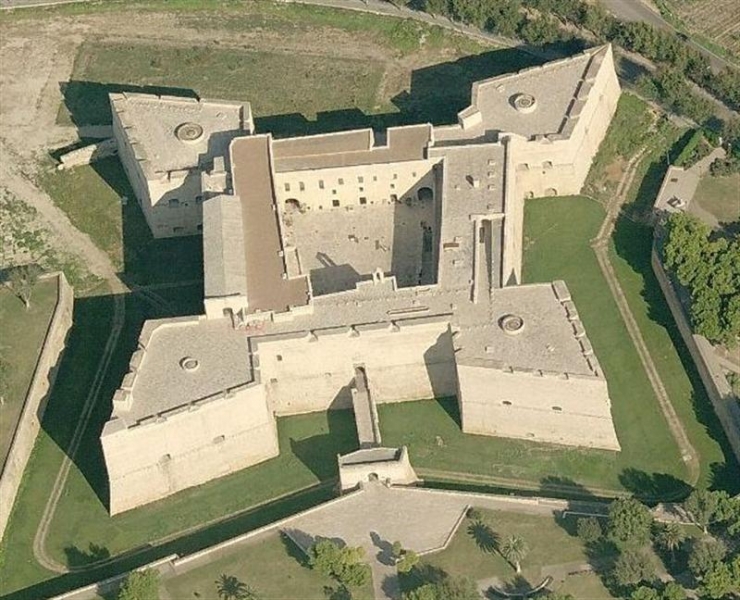
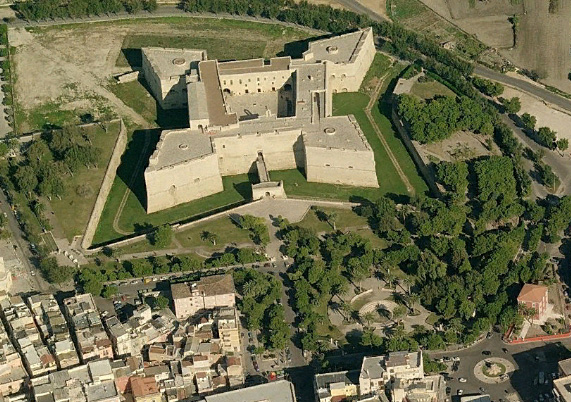
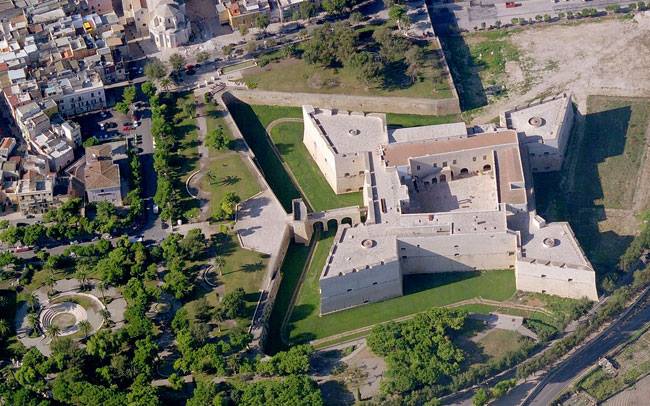
Vídeo:
Web recomendada: http://www.comune.barletta.bt.it/retecivica/citta/luoghi/castello/castello.html
Contador: 4056
Inserción: 2014-12-01 16:17:30
Lugares a visitar en un radio de 100 km (en línea recta)
Mapa de los lugares a 100 km (en línea recta)
Mostrando Registros desde el 1 hasta el 0 de un total de 0
Visitas |
Más visitados Basílica de San Marcos 149111 Catedral de Notre Dame (París) 137753 Torre de Pisa 128235 Monte Saint-Michel 97374 Presa de las Tres Gargantas 73697 |
Incorporaciones Ciudadela de Belle-Île-en-Mer 97 One Tower (Balneario Camboriú) 105 Shumen 136 Dobrich 200 Aeropuerto de Cali 149 |
Comentarios Arq. Jaime Fuentes Flores Torres Obispado EXTRAORDINARIO . FELICIDADES . Un Cordial saludo Directivos y Personal de ... hazola Cúpula de la Roca gracias me... gera Buenos Aires las mejores fotos de la mejor ciudad del... Daniel M. - BRASIL San Francisco ... PEQUE Presa Chicoasén SERA QUE ALGUIEN ME PUEDE DAR MAS INFORMACIÓN DE ESTE PROYECTO ESTUDIO EN LA UNACH Y ES PARA UN... |
 Tweet
Tweet


